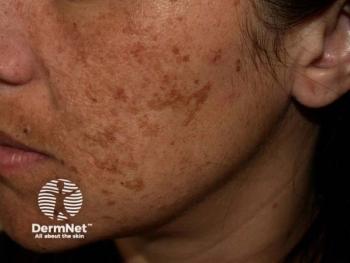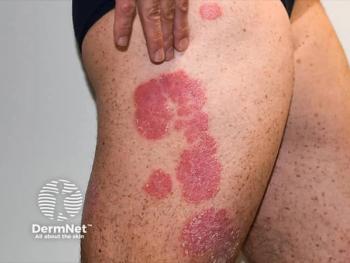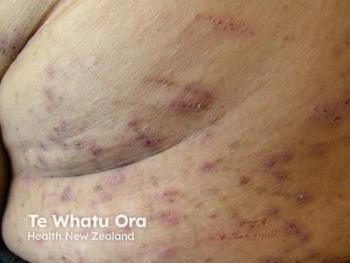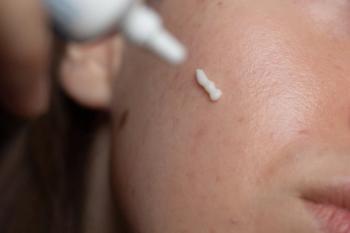
Social Media Fails on Retinol Safety Education
Key Takeaways
- Retinol-related content on social media is often inaccurate, with a mean DISCERN score of 2.13, indicating poor educational quality.
- TikTok, Instagram, and Facebook posts frequently lack critical safety information, with few videos addressing side effects or proper application techniques.
Social media spreads significant retinol misinformation, risking adolescent skin health. Experts call for improved digital education and accurate content creation.
A recent letter to the editor published in JEADV Clinical Practice by Nolan, Murphy, and Paul provides an in-depth qualitative analysis of the quality and content of retinol-related information circulating on popular social media platforms. This study highlights the urgent need for improved digital dermatologic education and underscores the risks associated with unregulated topical retinol use, especially among adolescents.1
Background
Retinoids, including retinol, play a well-established role in dermatologic care. While prescription forms like tretinoin are potent, over-the-counter (OTC) retinol is widely used for its cosmetic benefits in skin rejuvenation and acne treatment. However, retinol is not without risk: it can cause skin irritation, photosensitivity, and in rare cases, systemic toxicity such as hypervitaminosis A. Concerns over its unsupervised use have intensified following pending European Union regulations that will cap allowable concentrations in cosmetics to 0.05% in body lotions and 0.3% in facial products.2
With social media increasingly serving as a primary source of health information for adolescents, the study aimed to evaluate the accuracy, source credibility, and educational quality of retinol-related content on TikTok, Instagram, and Facebook.
Methods
The researchers conducted a cross-sectional analysis on February 2, 2025, identifying the 50 most-liked or most-viewed retinol-related videos on each of the 3 platforms. Each video was evaluated using the DISCERN tool—a validated 16-item instrument for assessing the quality of consumer health information, where scores range from 1 (very poor) to 5 (excellent).
Results
Across all platforms, the overall quality of information was found to be poor, with a mean DISCERN score of 2.13. Significant discrepancies were noted between content produced by medical professionals and non-experts:
- TikTok: With over 10.3 million likes and 66,850 comments, TikTok had a mean DISCERN score of 2.18. Only 30% of videos were made by board-certified dermatologists. The majority (62%) were user-generated testimonials, and only 18% mentioned potential side effects. Just 12% addressed correct application techniques.
- Instagram: Posts identified using the hashtag #retinol had a slightly lower mean DISCERN score of 2.02. Only 18% were authored by consultant dermatologists, while 82% came from nonmedical creators. None of the top 50 posts discussed side effects or application methods, despite reaching a combined 11.6 million followers.
- Facebook: Despite a high cumulative viewership of 247 million, Facebook videos also scored poorly (mean DISCERN 2.20). While 66% of videos mentioned side effects, only 10 addressed proper usage, and most content was anecdotal in nature.
Notably, across all platforms, none of the videos included warnings for adolescent users or recommended consulting a health care professional before use. Risks like photosensitivity and dermatitis were largely omitted.
Clinical Implications
These findings reveal a troubling landscape in which dermatologic misinformation proliferates unchecked. Adolescents, who are highly susceptible to peer influence and viral trends, are at particular risk. Unsupervised use of retinol products can lead to adverse dermatologic outcomes, including irritant contact dermatitis and worsening of pre-existing conditions.
The authors urge dermatologists and other medical professionals to take a proactive role in combating misinformation by creating accurate, accessible, and age-appropriate content. They also recommend that clinicians routinely ask adolescent patients about their use of non-prescription topical products during consultations.
Conclusion
The study by Nolan et al serves as a call to action for the dermatology community. It demonstrates that the bulk of retinol-related content on social media lacks reliable educational value and often omits critical safety information. With social media influencing an increasingly wide audience, especially adolescents, health care professionals must bridge the gap between medical guidance and public discourse to promote safe, informed skin care practices.
References
- Nolan B, Murphy L and Paul L. Retinol misinformation is ‘topical’ on social media: A qualitative analysis. JEADV Clinical Practice. doi:10.1002/jvc2.70124
- Mukherjee S, Date A, Patravale V, Korting HC, Roeder A, Weindl G. Retinoids in the treatment of skin aging: an overview of clinical efficacy and safety. Clin Interv Aging. 2006;1(4):327-348. doi:10.2147/ciia.2006.1.4.327
Newsletter
Like what you’re reading? Subscribe to Dermatology Times for weekly updates on therapies, innovations, and real-world practice tips.


















